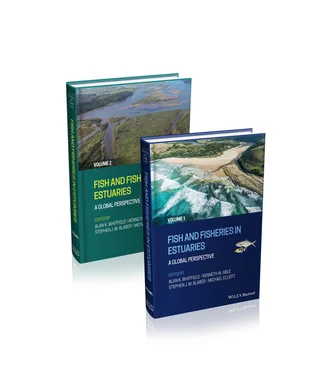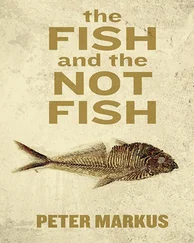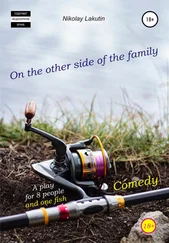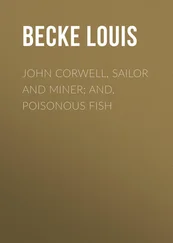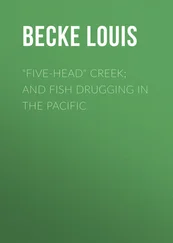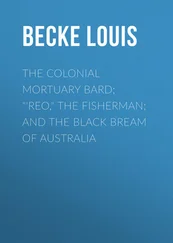The herbivore category includes fishes that consume plant material and although few, if any, estuarine‐associated species are reported to ingest only phytoplankton, the subcategory herbivore‐phytoplankton is included to accommodate phytoplanktivorous fishes should new information on fish diets become available. Hajisamae et al. (2003), for example, reported that phytoplankton dominated the diet of the clupeid Anodontostoma chacunda in the Johor Strait estuarine system in Singapore. FishBase also includes phytoplankton as a subset of the plant food category (Froese & Pauly 2006) and, in the assessment by Elliott et al. (2007), the herbivore category accommodates those fishes that have a mainly herbivorous diet comprising large plants or phytoplankton ( Table 2.3).
Table 2.3 Feeding Mode Functional Group (FMFG) (modified from Elliott et al. 2007).
| Category |
Definition |
Examples |
| Cool/warm temperate |
Subtropical/tropical |
| Herbivore (HV) |
Grazing predominantly on living macroalgal and macrophyte material or phytoplankton. |
Sarpa salpa (Sparidae) |
Coptodon rendalli (Cichlidae) |
| Omnivore (OV) |
Feeding predominantly on filamentous algae, macrophytes, periphyton, epifauna and infauna. |
Diplodus sargus (Sparidae) Rhabdosargus holubi (Sparidae) Hyporhamphus capensis (Hemiramphidae) |
Chanos chanos (Chanidae) Arrhamphus sclerolepis (Hemiramphidae ) Siganus vermiculatus (Siganidae ) |
| Detritivore (DV) |
Feeding predominantly on benthic detritus, microphytobenthos and associated meiofauna. |
Mugil curema (Mugilidae) Chelon richardsonii (Mugilidae) |
Mugil cephalus (Mugilidae) Oreochromis mossambicus (Cichlidae) |
| Zooplanktivore (ZP) |
Feeding predominantly on zooplankton (e.g. planktonic crustaceans, fish eggs/larvae). |
Sprattus sprattus (Clupeidae) Engraulis australis (Engraulidae) Gilchristella aestuaria (Clupeidae) |
Tenualosa toli (Clupeidae) Thryssa vitrirostris (Engraulidae) Hilsa kelee (Clupeidae) |
| Zoobenthivore (ZB) |
Feeding predominantly on invertebrates associated with the substratum, including zoobenthos and hyperbenthos. |
Pleuronectes platessa (Pleuronectidae) Cnidoglanis macrocephalus (Plotosidae) Sillaginodes punctatus (Sillaginidae) |
Acanthopagrus australis (Sparidae) Pomadasys commersonnii (Haemulidae) Pomadasys kaakan (Haemulidae) Sciaenops ocellatus (Sciaenidae) Anchoa mitchilli (Engraulidae) |
| Opportunist (OP) |
Feeding on a diverse range of food and cannot be readily assigned to one FMFG. |
Platichthys flesus (Pleuronectidae ) Amniataba caudavittata (Terapontidae) |
Bairdiella chrysoura (Sciaenidae) Terapon jarbua (Terapontidae) |
| Piscivore (PV) |
Feeding predominantly on finfish but may include large nektonic invertebrates. |
Argyrosomus japonicus (Sciaenidae) Lichia amia (Carangidae) Pomatomus saltatrix (Pomatomidae) |
Sphyraena jello (Sphyraenidae) Caranx sexfasciatus (Carangidae) Scomberoides commersoniannus (Scombridae) |
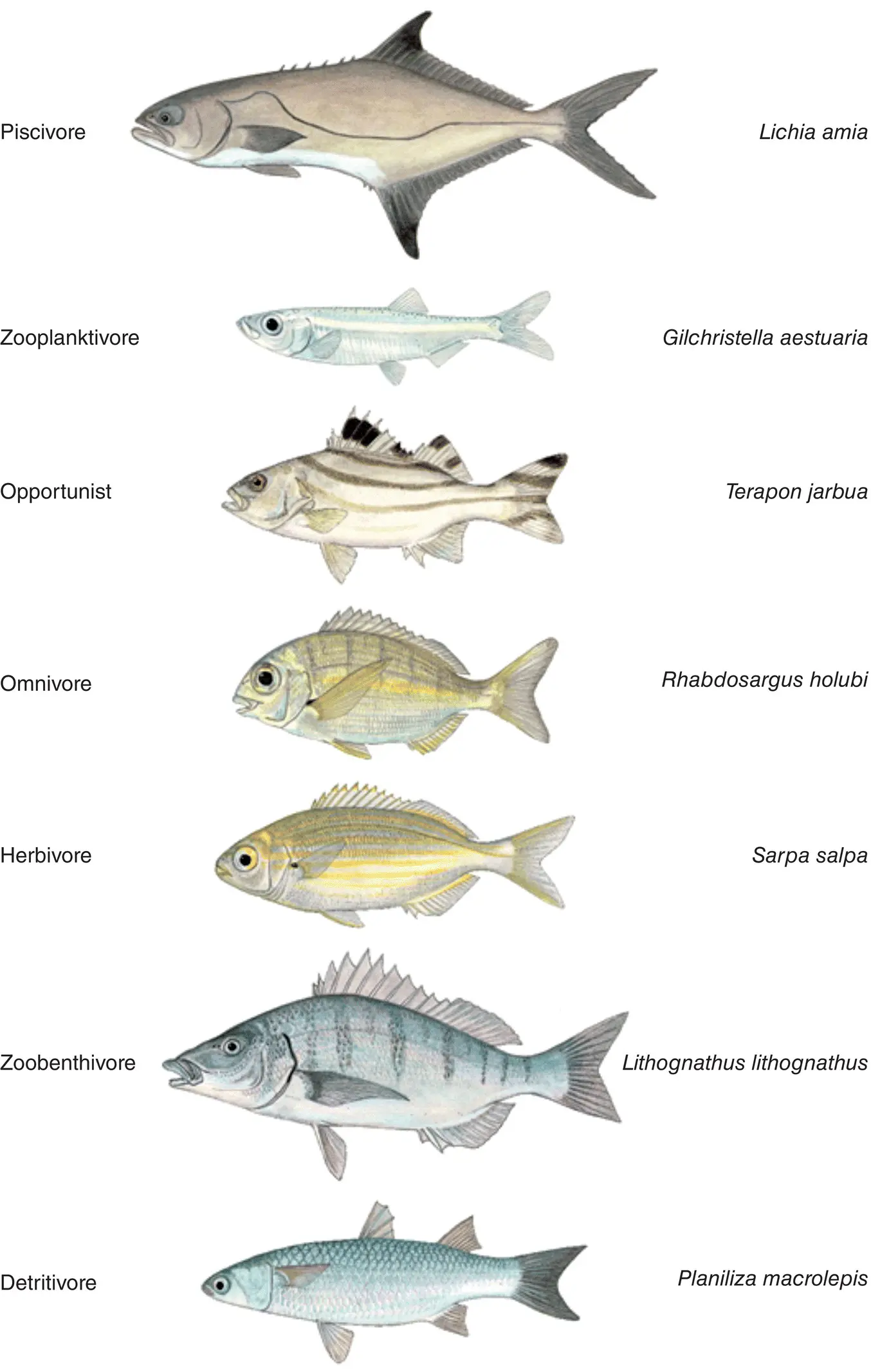
Figure 2.11 Examples of fish species from each Feeding Mode Functional Group (FMFG, see Table 2.4for more details) from southern African estuaries (after Whitfield 2019).
There appear to be very few examples of exclusive herbivory among the fishes found in estuaries, possibly due to their lack of a cellulase with which to digest the cell walls of plants (Kapoor et al. 1975). Hence, the designation of the herbivorous FMFG may be difficult, especially as most herbivorous fishes in estuaries also consume animal material and often small invertebrates associated with macrophytic plants and filamentous algae. Indeed, in most cases it would be almost impossible for a fish foraging on plant material not to also ingest small invertebrates associated with the vegetation. In some cases, the fish may be targeting the periphyton and epifauna associated with the plants, rather than the leaf blades on which these biota exist. An example of such a fish in estuaries is Diplodus capensis from southern Africa, which consumes wide spectrum of biota, especially aquatic macrophytes, filamentous algae and the associated epifaunal and periphyton (Coetzee 1986). Another species, Pelates octolineatus , consumes predominantly small crustaceans when <50 mm total length, but has an almost exclusively herbivorous diet at larger body sizes (Poh et al. 2018).
In some cases, there may be a temporal separation of food, e.g. Hyporhamphus capensis consumes mainly zooplankton in late winter and macrophytic plants in late summer (Coetzee 1981). At a finer scale, the congeneric Hyporhamphus melanochir consumes seagrass during the day, but benthic‐dwelling amphipods at night following their nocturnal vertical migration (Robertson & Klumpp 1983). There is the need for an energetic assessment of this type of feeding in that, although a large amount of plant material is ingested by these species, the relatively small amount of animal material may be more important to the fish because of the higher calorific value and assimilation rate. For example, although H. melanochir consumed three times more seagrass than crustaceans, these invertebrates were considered by Klumpp & Nichols (1983) to be an essential source of protein and be at least as important as seagrass in providing energy. While there may not be many true herbivores in estuaries, there are some, such as certain Hemiramphidae, Sparidae, Siganidae and Kyphosidae, in which their diet is overwhelmingly dominated by plant material (Nordlie & Kelso 1975). It is therefore proposed that the herbivore category be retained for further testing, especially as a means of comparing fishes in different systems.
Zooplanktivorous fishes are those that typically feed on small crustaceans in the water column, for example the diet of Anchoa mitchilli comprises mainly zooplankton but may also include fish eggs and larvae (Froese & Pauly 2006). Typical zooplanktivores found in estuaries include members of the Clupeidae and Engraulidae ( Table 2.3). Zooplankton is also a major component of the diet of the larvae of marine fish species (Llopiz 2013) and most, if not all estuary‐associated fish species, are planktivorous during their larval life (Islam et al. 2006), but change to juvenile/adult diets with growth (Whitfield 1985, Strydom et al. 2014). The larvae of many anadromous, semi‐anadromous and estuarine‐resident fishes also prey predominantly on zooplankton (Costalago et al. 2016) and are therefore part of the zooplanktivorous guild at this stage of their life cycle. The majority of marine fishes that utilise estuaries, however, enter these systems as postlarvae and are therefore already at a stage where they have or are about to switch to their juvenile/adult diet (Strydom et al. 2014). In addition, there are examples of pelagic fish taxa such as Hilsa , Alosa and Brevoortia, which consume zooplankton during both the larval and juvenile stages (Blaber 1979). Juveniles and adults of several species of atherinid in south‐western Australia have been shown to consume large quantities of planktonic crustaceans (Prince et al. 1982).
Читать дальше
